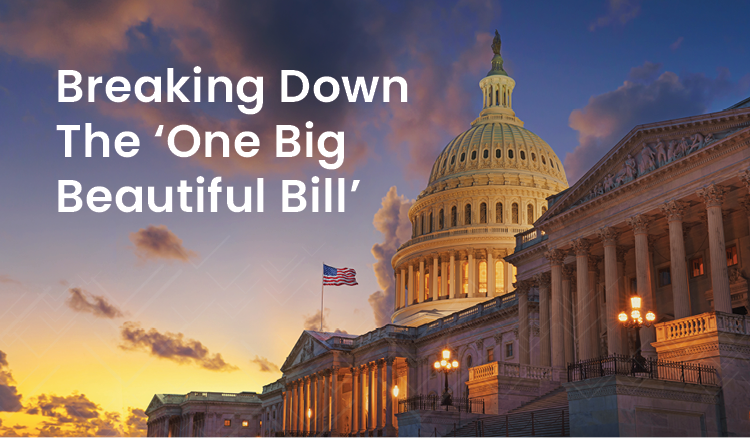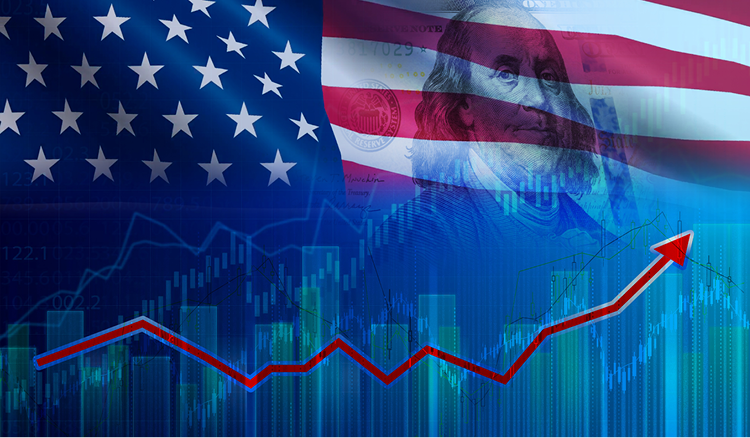Breaking Down The ‘One Big Beautiful Bill’ and What It Means For Manufacturers and Distributors
On July 4, 2025, President Trump signed H.R.1 – the One Big Beautiful Bill Act into law. While most headlines focused on the political drama, the real story is the unprecedented opportunity to reinvest in U.S. production.
In this article we cover:
- What the bill unlocks for your business
- Why speed and flexibility will define the winners
- How Veryable’s on-demand labor model helps you scale without adding permanent costs
Whether you’re eyeing facility expansion, capital investments, or a reshoring play—now is the time to act.
Key Takeaways
H.R.1 touches nearly every corner of the tax code and federal spending, but two pillars are most relevant to business leaders in the manufacturing and distribution space.
Full Expensing for U.S.-Based Production Investments
100% Bonus Depreciation is permanently restored for qualifying tangible property placed in service on or after January 19, 2025—including equipment, tools, and machinery with recovery periods of 20 years or less
Qualified Production Property (QPP)—such as factories and major capital improvements to manufacturing or warehouse facilities—is eligible for full expensing under a new § 168(n).
- Construction must begin by December 31, 2028
- Assets must be placed in service by January 1, 2031
Implications: If you’re expanding facilities, retrofitting operations, or purchasing new production machinery—you can deduct 100% of those costs immediately, accelerating cash flow and enhancing ROI.
R&D Expensing + EBITDA-Based Interest Deductions
- The law permanently restores full expensing for domestic R&D under §174, reversing the five-year amortization requirement that began in 2022
- It also reverses the restrictive EBIT standard, restoring the more generous EBITDA-based limit on interest expense deductions as of January 1, 2025
Implications:
You now have improved financial flexibility to invest in innovation, automation, and facility upgrades—backed by a tax structure that immediately rewards those expenditures.
Why This Bill Matters to Leaders in Manufacturing, Warehousing, and Logistics
H.R.1 isn’t just another tax bill. It’s a catalyst for real industrial transformation—one that rewards U.S.-based production and logistics with major tax advantages, streamlined cost structures, and favorable financing environments.
It represents a rare convergence of:
- 📉 Tax Advantages – Immediate expensing of machinery, tools, and even entire facilities creates stronger cash positions and better margins on growth investments.
- 🏗 Reshoring Momentum – Political and economic tailwinds are shifting supply chains back to U.S. soil, opening up new federal contracts and domestic demand.
- 💸 Federal Incentives to Invest Domestically – From bonus depreciation to permanent R&D expensing and restored interest deductibility, the government is encouraging you to build, scale, and modernize here—now.
But for all the macro-level benefits, the execution risk is entirely on your shoulders.
Veryable: Your Competitive Advantage Under H.R.1
Veryable’s on-demand labor model gives you the ability to scale operational capacity in real time—without adding full-time headcount or relying on slow, inflexible hiring cycles. That means you can act on new opportunities without being held back by outdated labor models.
Here’s how:
Rapidly Staff New Lines and Facilities
Placing new assets in service before 2031 is key to unlocking full bonus depreciation.
Don’t let labor delays slow your ROI. With Veryable, you can:
- Post available work in minutes
- Access local, pre-vetted Operators in days
- Launch production faster and stay ahead of the expensing window
Flex Labor to Meet Demand Spikes
Whether it’s a reshoring initiative, new contract, or seasonal volume surge, Veryable lets you:
- Add shifts or workers on short notice
- Scale up or down based on actual demand
- Control fixed labor costs without sacrificing output
Operate Lean in Emerging Markets
As investment flows into secondary and rural markets, fixed labor costs can be a barrier to entry. Veryable eliminates that friction by giving you:
- Instant access to flexible, skilled labor
- A low-overhead way to scale in new regions
- The ability to test and grow capacity before committing long-term
What Business Leaders Should Do Now
H.R.1 rewards action. To qualify for the full tax benefits, your capital assets—facilities, equipment, upgrades—must be placed in service by January 1, 2031. That may seem distant, but anyone who’s built or scaled a plant knows: five years is a blink in industrial timelines.
If you want to take full advantage of the One Big Beautiful Bill Act, your window is already narrowing.
Here’s what should be on your radar today:
- Facility Expansions: Design, permitting, and construction timelines mean projects must break ground soon to hit the in-service deadline.
- Equipment Installations: Lead times for automation, CNCs, conveyors, and tooling are stretching into 2026—lock in now or risk missing the depreciation window.
- Contract Bids: Domestic production capacity is a differentiator. If you can’t scale quickly, you’ll lose out to competitors who can.
In all of this, labor is the critical constraint.
Your tax strategy, CapEx plan, and revenue pipeline are only as strong as your ability to execute on the floor.
The Bottom Line
The One Big Beautiful Bill is a turning point for American manufacturing, delivering unprecedented support to revitalize the manufacturing, logistics, and supply chain sectors. But while the policy sets the stage, success depends on how quickly and efficiently companies can respond.
In a fast-moving industrial landscape, agility is everything. Veryable gives you the capability to adapt quickly, maximize efficiency daily, and turn policy-driven opportunity into sustainable growth.
Ready To Get Started?
No matter your industry or scale—whether you’re modernizing operations, expanding capacity, reshoring production, or launching new projects—Veryable empowers your business with the agility it needs to succeed in this environment.
Talk to an Expert Get Started Now
Additional Resources
U.S. Manufacturing Today Podcast
For more information and insights, make sure to check out our new U.S. Manufacturing Today Podcast. Hosted by our Head of Reindustrialization, Matt Horine, and featuring interviews with business leaders as well as industry experts, this podcast covers the latest trends and shifts affecting the U.S. manufacturing and distribution sectors.
In this week’s episode, host Matt Horine discusses several recent trade policy developments under Trump 2.0 and how they’re impacting American manufacturers.
You can find this podcast on our website, Spotify, Apple, YouTube, and PocketCasts.
Navigating Trump 2.0
For additional insights into what’s changing under Trump 2.0, visit our “Navigating Trump 2.0” page. There you'll find comprehensive information on recent and potential future changes, along with more articles like this one.
Veryable Vendor Network
The Veryable Vendor Network (VVN) is an ecosystem of manufacturing, warehousing, and logistics companies that utilize Veryable to deliver quality products and world-class service to their customers regardless of demand. If you’re looking for new domestic suppliers, submit a form and our team will be in contact shortly after.
Previous Posts
How On Demand Labor Helps Manufacturers Maintain World Class Quality When Demand Refuses to Sit Still
The Future of Manufacturing and Logistics
Create a free business profile today to explore our platform.






